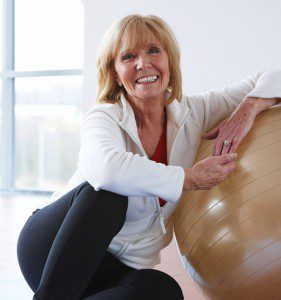By Timothy Blend, MD –
 Anti-aging medicine has thus far had a strong basis in surgical intervention (e.g. plastic surgery) or dermatological (e.g. cosmetic) procedures to create an anti-aging effect. However, over a period of time, the body and its organs continue to age unabated, with corresponding deterioration in the overall appearance and in the performance of the body.
Anti-aging medicine has thus far had a strong basis in surgical intervention (e.g. plastic surgery) or dermatological (e.g. cosmetic) procedures to create an anti-aging effect. However, over a period of time, the body and its organs continue to age unabated, with corresponding deterioration in the overall appearance and in the performance of the body.
This article, takes you beyond this cosmetic effect of anti-aging, to non-invasive approaches of servicing and repairing various organs of the body.
Armed with science, we are now able to illustrate that aging is a detectable and largely reversible process. New cutting edge testing and interpretation, by anti-aging physicians, are able to show the existence of toxins, imbalances, deficiencies, and overproduction of certain messenger molecules or hormones in the body. Along with this new technology are various modalities to help restore the aging body.
In the last century the main focus of medicine has been to prevent and treat infections, and to treat symptoms. This is sometimes referred to as “protocol medicine”, meaning that everyone is treated in a similar manner based on the symptoms and diagnostic testing.
However, medicine is changing, and anti-aging medicine is at the forefront of this change. Anti-aging medicine does not treat just the symptoms. It tries to find and treat the cause of the problem. Science now offers us the chance to determine exactly what approach is needed to successfully treat an individual, and by combining anti-aging philosophies with the most advanced scientific techniques we are able to offer our patients a completely personalized approach to healthcare.
For example; a conventional, protocol-based physician would request routine blood work including a cholesterol panel, an EKG, and a stress test for a patient with cardiovascular concerns. If everything came back fine, the patient would be sent on their way. The trouble with this approach is that one-half of people who have a heart attack may have very normal cholesterol levels. So, conventional medicine might miss one-half of the people tested.
The anti-aging approach to this patient is very different because it looks at a broader picture and considers other factors. High cholesterol itself does not cause heart disease. A high cholesterol level is simply a manifestation of other risk factors that are present. Cholesterol fractionation or particle size is very important, as are homocysteine, lipoprotein(a) (Lp(a)), C-reactive protein (CRP), ferritin, fibrinogen, and lipoprotein-associated phospholipase A2 (Lp-PLA2) levels. Investigating whether a patient has hyperinsulinemia/metabolic syndrome is equally as important as looking at their cholesterol. It is also important to note that hormonal imbalances are also risk factors for heart disease.
An anti-aging physician should firstly consider the patient’s lifestyle, including: nutrition, detoxification, exercise, stress reduction, antioxidants, and nutraceuticals. Of course, hormones should be used to treat a deficiency, and if hormone replacement is necessary it should be with bioidentical hormones carefully titrated to more youthful levels.
The first step in our approach to an anti-aging program relies on science-based herbals taken orally to gently cleanse the gastrointestinal system. This is known as detoxification.
Exercise is one of the most important anti-aging therapies. Most of us even those of us who believe we exercise are probably exercising in the wrong manner. Most people (even anti-aging physicians) are completely unaware of this exercise problem. The fact is, that the way in which we are told to exercise may not build functional strength, may not make the heart stronger, and may not improve lung capacity. What can we do about this?
Consider The Harvard Alumni Health Study. In this study the researchers examined the effects of vigorous (high-intensity) and non-vigorous (low-intensity) exercise on longevity. The results showed that non-vigorous exercise did not increase longevity. On the other hand, vigorous exercise was associated with a significant decrease in all-cause mortality.
Progressively accelerating cardiopulmonary exertion (PACE) can help people to develop the cardiac reserve and lung capacity that are vital for health. High-intensity exercise is key; however, most people cannot just go out and start sprinting. In order to overcome this problem we suggest the element of “progressivity” – regular and consistent increases in the intensity of demands on the cardiovascular system by making gradual repeated changes in the same direction.
Bioidentical hormone replacement requires data gathering and determination of the patient’s baseline panel, which may lead to a prescription for the determined hormone therapy.
Testosterone replacement therapy (TRT) is safe and it provides dramatic benefits, for both men and women, rarely before the age of 40. Testosterone decreases inflammation, which is linked to many diseases, including heart disease, cancer, and neurodegenerative diseases. Testosterone also improves quality of life. It can improve libido in both sexes.
DHEA is a neurosteroid (it is made in the brain as well as in the adrenals) and is the most abundant steroid hormone in the blood. Levels are high in the young and low in the old. There are no unique symptoms of DHEA deficiency; however low levels are associated with obesity, type 2 diabetes, immune dysfunction, autoimmune disease, cancer, hypertension, cardiovascular disease, depression and loss of well being, low libido, erectile dysfunction, and osteoporosis.
Of special concern to women is the delicate balance between estrogen and progesterone, sometimes antagonistic and sometimes complementary.
Symptoms of progesterone deficiency include: anxiety, agitation, irritability, anger, aggressiveness, weight gain, water retention, bloating, headache, achy joints, swollen or tender breasts, spotting or breakthrough bleeding, mood swings, and insomnia.
Symptoms of estrogen deficiency include: hot flashes, night sweats, fatigue, poor memory and foggy thinking, low energy, depressed mood, decreased concentration, decreased sexual desire or libido, vaginal dryness, excessive daytime sleepiness, stress incontinence, urinary tract infections, osteoporosis, cardiovascular disease, and dementia.
Symptoms of estrogen excess include: agitation, anxiety, weight gain, water retention, headaches, swollen or tender breasts, bloating, spotting or breakthrough bleeding, mood swings, poor sleep, achy joints, and excessive bleeding.
Cortisol deficiency caused by adrenal fatigue can range from mild cortisol deficiency to severe cortisol deficiency. Symptoms of cortisol deficiency include: fatigue, anxiety and nervousness, poor stress tolerance, hypersensitivity to the environment, feeling absent-minded and/or “spacey”, depression, paranoia, irritability/hostility, and concentration problems.
Symptoms of adult human growth hormone (HGH) deficiency include: decreased quality of life, sarcopenia (loss of muscle mass), loss of exercise capacity, osteopenia (loss of bone), loss of strength, increased total and intra- abdominal fat, glucose intolerance, dyslipidemia, increased fragility of skin and blood vessels, decreased skin thickness, decreased muscle tone, decreased confidence and optimism, and decreased immune function.
Hormone optimization is an extremely power-ful anti-aging tool when properly prescribed to specifically address an individual’s particular needs.
Other major topics routinely visited by anti-aging physicians are fat metabolism, hypothyroidism (thyroid optimization), adrenal stress or fatigue with evaluation of cortisol levels. It was my intention to bring to the forefront the importance of anti-aging medicine and how protocol medicine is lacking for our future health and well-being.
The Blend Institute
www.blendinstitute.com
1911 Manatee Avenue East, Suite 102, Bradenton FL 34208









